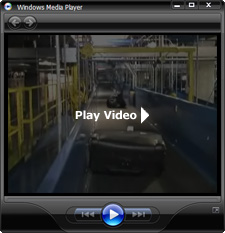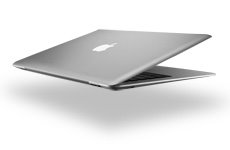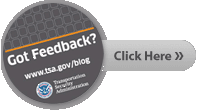Checkpoint Changes Coming
 In TSA's checkpoint of the future, passengers will approach the security kiosk, carry-on in hand, and put a biometric on the scanner. While the scanning system clears you after it confirms your identity and flight information, the technology in the kiosk will verify that there are no truly dangerous items on you or in your bag. Total elapsed time: about 1.75 seconds. Version Two will add a Teleporter so that you will not need to get on an airplane.
In TSA's checkpoint of the future, passengers will approach the security kiosk, carry-on in hand, and put a biometric on the scanner. While the scanning system clears you after it confirms your identity and flight information, the technology in the kiosk will verify that there are no truly dangerous items on you or in your bag. Total elapsed time: about 1.75 seconds. Version Two will add a Teleporter so that you will not need to get on an airplane.Your grandchildren will love it.
Technology is a wonderful thing but it's not an overnight process - it must be invented, funded, built, tested, bought, and deployed. Unfortunately, the security technology field has not sufficiently fired the imagination of scientists or the private capital markets to the point where truly breakthrough technology will soon transform the checkpoint experience. Yet the current security threat environment requires that we get smarter and more nimble, now.
We have some significant changes in store for the checkpoint starting this spring. I would like your thoughts and I hope TSA will earn your support in our common mission. Please take a look at our Checkpoint Evolution micro-site.
TSA has taken a fresh look at our checkpoint operations to see if we can improve security and the passenger experience with what we have today. We took what we know from the intelligence and security communities, we listened to our employees, we learned from passengers (including on this blog), we evaluated readily deployable technology, and have come up with changes that we have begun piloting.
There are three elements to what we are calling Checkpoint Evolution: people, process, and technology.
People. The threat environment makes it clear that we need to add layers of security to be effective against adaptive terrorists. This means adding a capability to detect a potential problem even if they are not carrying anything prohibited - in other words, more focus on people, not just things. That means deploying more officers specially trained in behavior detection and document checking to identify people that intend to do harm, not just waiting to find their prohibited item in a carry-on bag.
Process. We're making improvements to the checkpoint process, including better signs to tell you what's going on at the checkpoint and why, and what you need to do at various stages. There will be areas to divest - or prepare - for screening and also an area to get everything back together after you're done. You have seen some pilots with our Diamond Select and Family lanes and we will continue to make improvements.
Technology. We don't have the end-all-be-all machine yet, but there are some technologies we will be installing in many airports throughout the year that are an improvement to what currently exists, including multi-view x-ray for carry-on bags and whole body imaging for passengers. The deployment of these machines will represent the first significant addition to the checkpoint since metal detectors and X-ray machines were introduced in the 1970s.
Our enemies have the advantage of picking their time, place, and method of attack. Those advantages are more pronounced if our defenses are rigid and predictable - they could use our standard operating procedures and technology against us.
We do have some advantages. First, airports are our turf; we have the home field advantage and can set the rules. Keeping an element of randomness and calming the checkpoint are critical.
Second, TSA's officers have experienced more passengers and bags than anyone else on earth and that knowledge is priceless. They know what doesn't seem right. In a calmer checkpoint environment, hostile intent stands out from the behavior of regular passengers just trying to navigate the system. Behavior detection officers and document checkers will use their training and skills to identify people and things that stand out from the norm and give them added scrutiny.
Third, the advantage we need to bolster most is the fact that the numbers are overwhelmingly in our favor - two million people a day fly, every one of them with a vested interest in assuring the safety of our system. We know the overwhelming majority of passengers pose no threat, so we want to improve your checkpoint experience and get your help in making those who do pose a threat stand out.
In short, we are seeking to reduce our weaknesses while improving our strengths until the futuristic checkpoint with seamless security screening becomes a reality.
Please visit our Checkpoint Evolution Web site to find out more, and share your feedback. If we partner together, we can make flying safer and a lot easier - right now. Thank you for your participation and partnership with TSA in keeping travel safe.
Kip
Labels: innovation, mission







